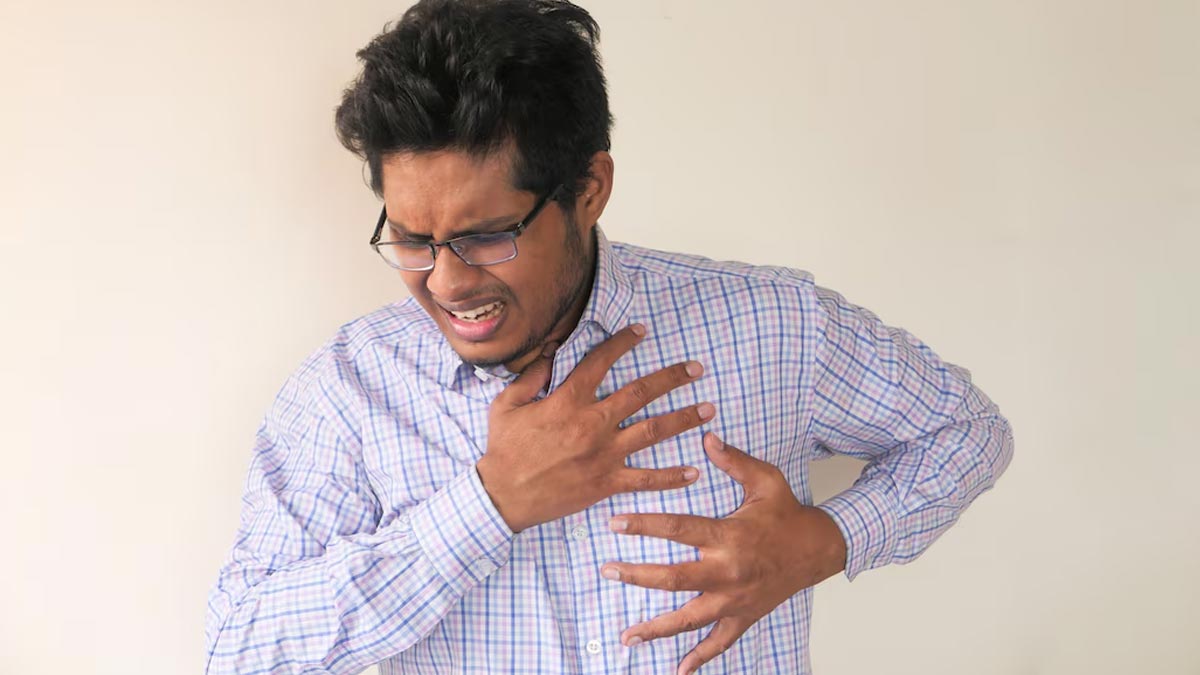
Did you know that heart attacks are one of the leading causes of death worldwide? According to the World Health Organization (WHO), an estimated 1.79 crore people died from Cardiovascular Diseases (CVDs) in 2019, of which 85% were due to heart attacks and strokes.
Table of Content:-
The most concerning characteristic of a heart attack is its unpredictability. It is often referred to as a ‘silent killer’ because it usually does not show any noticeable signs, or if it does, it is mistaken for benign conditions. Researchers continue to look for ways to identify any form of warning sign associated with the life-threatening disease. A recent study conducted by researchers at Uppsala University in Sweden was somewhat successful in identifying blood biomarkers that could prove useful in predicting a heart attack risk within 6 months. However, research is still ongoing, and there is currently no sure-shot way to predict a cardiac event.
Also Read: Silent Heart Attack: Can You Have A Heart Attack And Not Know It?
Meanwhile, what people can do is address the common risk factors and pay attention to these three warning signs of heart attack that are often overlooked, as shared by Dr Vikrant Khese, Consultant Cardiologist, Apollo Clinic, Kharadi.
Chest Pain Or Discomfort

“Chest pain or discomfort, also known as angina, typically occurs when there's a reduction in blood flow to the heart muscle due to narrowing of the coronary arteries,” explains Dr Khese.
He adds, “This narrowing is often caused by the buildup of plaque, a combination of fat, cholesterol, and other substances, on the arterial walls. When the blood flow to the heart is restricted, it can result in chest pain or discomfort.”
According to the US Centers for Disease Control and Prevention (CDC), most heart attacks involve pain and discomfort in the centre or left side of the chest that lasts for more than a few minutes or that goes away and comes back.
Dr Khese says that this type of unease becomes more severe and prolonged during a heart attack as the blood flow to a part of the heart muscle is completely blocked.
Shortness Of Breath

When it comes to a heart attack, shortness of breath is a common symptom. This is also a sign of your heart’s inability to effectively pump oxygen-containing blood around the body.
Dr Khese says, “When the heart muscle is deprived of oxygen due to a blocked artery, it struggles to function properly. This can lead to a backup of fluid in the lungs, causing difficulty breathing.”
Additionally, the body's response to stress, pain, and decreased oxygen levels can also contribute to shortness of breath during a heart attack, he adds.
Discomfort In Other Areas Of The Upper Body

Many people may not experience any symptoms before a heart attack. However, those who do often ignore the signs or mistake them for other health problems.
This often includes discomfort in areas such as the arms, back, neck, jaw, or stomach, also known as referred pain.
It occurs because the nerves that transmit pain signals from the heart also connect to other parts of the body, says Dr Khese. He further notes that when the heart muscle is deprived of oxygen, these nerves can become activated, causing pain or discomfort in these other areas.
“The brain may interpret this pain as originating from the arm, back, neck, jaw, or stomach, rather than the heart itself,” he shares.
Also Read: Is Your Heart In Good Shape? 5 Important Tests That Can Tell You
Who Is At Risk?

There is no way to know if you're going to have a heart attack. However, there are factors that can tell you whether you're at risk or not. These include:
- Age: Men aged 45 and older and women aged 55 and older are more at risk of having a heart attack.
- Family history of early heart disease
- Having pre-existing conditions, like high blood cholesterol, high blood pressure, or diabetes
- Being overweight and obese
- An unhealthy diet includes eating too many foods high in saturated fat or sodium.
- Lack of regular physical activity
- Smoking
- Alcohol consumption
Conclusion
Assessing your risk factors and addressing them on time can minimise your risk of developing a heart disease. While it does not guarantee heart attack prevention, it sure does reduce the risk. Eating healthy, doing regular exercise, managing stress levels, quitting smoking, and cutting down on alcohol can help tremendously. Moreover, do not overlook even the slightest indication of a heart attack. Consult a doctor if you have chest pain, shortness of breath, or discomforting sensations in your upper body, particularly if you have any of the risk factors mentioned above.
Also watch this video
Read Next
Why Should You Maintain Low Sodium Diet If You Are Suffering From Heart Disease? Ways To Cut Back
How we keep this article up to date:
We work with experts and keep a close eye on the latest in health and wellness. Whenever there is a new research or helpful information, we update our articles with accurate and useful advice.
Current Version